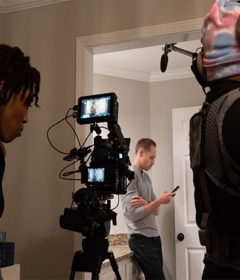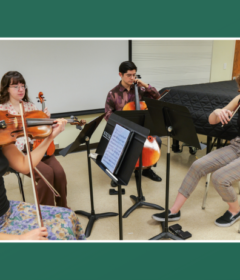Undergraduate Research: SURE Thing
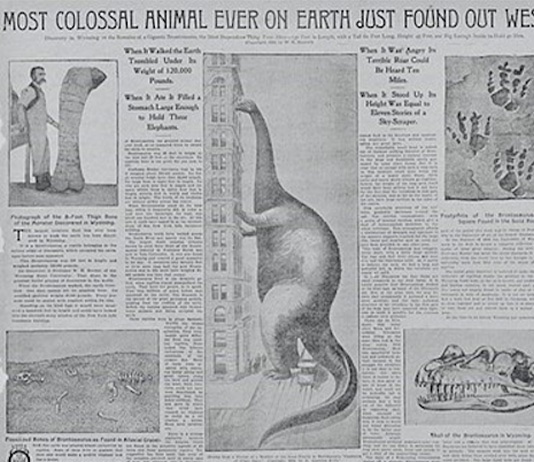
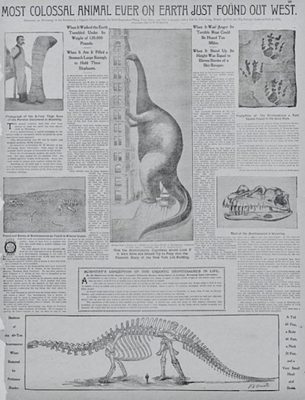
“Bone Wars” engulfed American paleontology in the late 1800s. Enthralled by the spectacular dinosaur skeletons being unearthed by paleontologists in the American West, U.S. natural history museums scrambled to add the beasts’ bones to their collections.
“Paleontologists were giddy to oblige, even if that meant — said Katie Wedderstrand ’23, a SURE scholar and a social studies major with a concentration in history — resorting to “unethical fossil-hunting.”
The Bone Wars also spilled over U.S. borders and pitted Americans, who were veritable upstarts in the study of geologic past involving the analysis of plant and animal fossils, against their more established British, French and German counterparts.
Wedderstrand decided to make paleontology the subject of her proposal for a grant from SURE, the Stetson Undergraduate Research Experience.
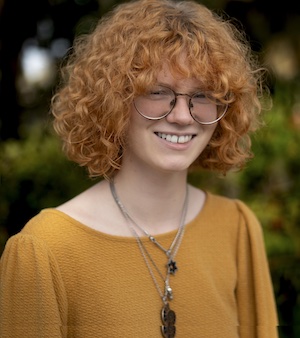
Awarded one of the highly competitive grants, Wedderstrand titled her project oddly but quite effectively. The project’s name was “I wish you would throw that bone out of the window’: The Bone Wars and Cultural Nationalism in the late Nineteenth Century.” Her research paper earned her a place presenting at the biennial national conference of Phi Alpha Theta, the honor society for undergraduate and graduate students and professors of history, held this January. Plus, her work was named Florida’s best undergraduate manuscript at the state regionals of Phi Alpha Theta in March.
“Katie’s exploration of nationalism that goes beyond wars and military leaders to ’My dinosaur is bigger than your dinosaur’ was fascinating,” comments Kimberly Reiter, PhD, associate professor of history and chair of Stetson’s Undergraduate Research Committee and Stetson Showcase.
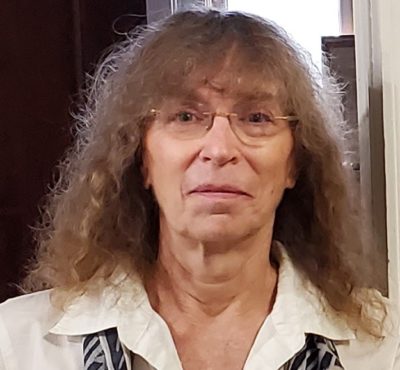
Reiter, who signed on as Wedderstrand’s faculty mentor for her project, smiled impishly and noted the curious title “included a quote by one of those paleontologists. When a bone didn’t fit his thesis, he would just … .” Reiter let her hand, making a dismissive throwing gesture, finish the sentence.
Since Grady Ballenger, PhD, Professor Emeritus and former professor of English, introduced the idea of Stetson undergraduate research grants in 1998, during his first year as dean of the College of Arts and Sciences, SURE scholars have researched their passions around the world.
From Archaeology to Cancer, Even Basketball and Baseball
The students have gotten dirty on archaeology digs in northern England and Greece; studied German lieder in Vienna, Austria; explored the “symbolic capitalism” at play in the National Basketball Association; investigated 9/11 conspiracy theories; composed symphonic music on a computer; researched how viruses may cause cancer; and pursued many other projects.
That includes rats. Lab rats, of course.
Yahia Adla ’23, a Syrian-born biology major who is minoring in biology/pre-med, titled his SURE project “Spilanthol alters the consumption of, and taste reactivity behaviors elicited by, solutions in male Wistar rats.”
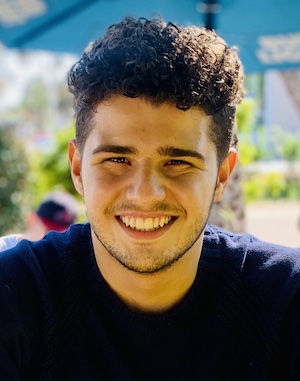
In a Junior Seminar taught by Michael King, PhD, the professor of biology mentioned his research “on neural mechanisms that control behavioral responses to taste input,” Adla recalls. “Imagining how our brain can perceive different tastes and eventually control our cravings and food intake was mind-blowing. As he was speaking, I was thinking about how we manipulate our nervous system in perceiving taste differently from what we eat.”
That led Adla, who as a high-schooler worked in Egypt at its National Cancer Institute and National Research Center, to ponder Spilanthol, a bioactive compound and taste enhancer. “That hasn’t been investigated yet from a neuroscience perspective,” Adla points out. “When I pitched this idea to Dr. King, he was excited, and we immediately started designing an initial experiment and applying for a grant.”
Such curiosity can lead almost anywhere. As a result, SURE scholarship isn’t exclusively about hard science research. SURE’s webpage proclaims it is “a signature program that fosters excellence in research and creative activity,” and is open to any student on campus — from the College of Arts and Sciences, the School of Business Administration and the School of Music.
“We’ve had people use a SURE grant to write their ‘great American novel,’” Reiter says. “One student wrote a requiem. If the proposal is really good, we’ve helped fund students going off to international studios to study — at the Orfeo Music Festival in Italy, for example.”
Business students have used SURE grants “to fund research that will take them into the Roland George Investments Program,” Reiter adds. “My favorite one ever from the School of Business was a study about whether left-handed pitchers make more money” in Major League Baseball.
Tackling Complex Challenges
The core of the SURE program is an eight-week, research-intensive experience that takes place during the summer, in which students work on individual projects under a Stetson faculty member who has agreed to be their mentor. Research may continue throughout the subsequent year, with SURE scholars expected to present their findings at various conferences and at the springtime Stetson Showcase. (This year’s Stetson Showcase was scheduled for April 11. The 2022 event featured nearly 200 students exhibiting their academic prowess in a wide assortment of disciplines at venues across campus.)
SURE grants require great effort, even during the application process.
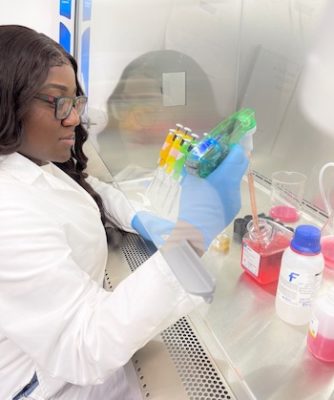
Students must be at least a sophomore and apply on the SURE webpage. A committee composed of “an eclectic bunch of Stetson faculty” — Reiter’s words — awards up to 20 grants annually. Each award provides up to $2,000 for research and up to $500 to support travel, although in certain cases the travel stipend may be increased to $1,000.
The goal of the program “is to develop informed graduates equipped with skills and dispositions to tackle complex challenges,” according to the online description.
Kaira Thevenin ’24 is another such student. The Apopka native and health science major with a minor in chemistry titled her SURE project “Exploration of Merkel Cell Polyomavirus Small Tumor Antigen Localization in Transformation and Tumorigenesis.”
Her research will lead to “more insight into how viruses cause cancer,” Thevenin says.
Working with her mentor, Kristine Dye, PhD, assistant professor of health sciences and biology (a relationship that goes back to Thevenin’s first year on campus and predates her SURE research), Thevenin states the methodologies of her project “include various transformation assays, subcellular fractionations, mutagenesis and tissue culture.”
The SURE grant enabled her to continue the research last summer.
“Some of my experiments tend to be quite intensive and/or require a long period of time to conduct,” Thevenin describes. “As a full-time student, I find myself breaking up these experiments into multiple days to accommodate my class schedule during the semester. With the help of the SURE grant, I was able to solely focus on research over the summer and knock out a lot more experiments than I would have been able to do during the school year.”
SURE funds also provided the opportunity for her to present at an undergraduate research conference in California. “It was a really memorable experience as I had never been to California before,” Thevenin says. “I was fortunate enough to receive a poster presentation award at that conference.
“My SURE experience made me realize there is more than one direction, and the possibilities are endless.”
The Financial Equation
Reiter, who also serves as a counselor for the Council on Undergraduate Research, a national organization, would like to expand those possibilities at Stetson. Not coincidentally, that means obtaining more funding.
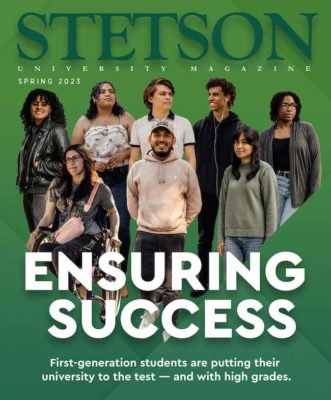
While the stipend faculty mentors receive has been increased from $250 to $500, “the amount we give students — $2,000 — has not changed in 25 years,” Reiter says. “Many schools now have quite exceeded that amount.”
The university contributes some dollars to SURE. However, the bulk of funding comes from donations by the Palm Beach Community Trust and the Frueauff Foundation.
The goal of Stetson’s Undergraduate Research Committee is to increase individual grants to $3,000 and travel stipends to $1,500. And, as for the mentor stipend of $500, Reiter is concerned that even the increased amount isn’t adequate compensation for the time and effort required of faculty.
“We’ll need donors for this,” Reiter asserts.
The funding situation came starkly into focus as six SURE scholars were selected to take part in the 2023 National Conference on Undergraduate Research at the University of Wisconsin-Eau Claire on April 12-15. The conference was expected to attract 4,000 college students and faculty members from across the nation.
Reiter called the conference a “big deal” but also cited the costs to students in event registrations, flights and hotels. “We struggle for even the registration money,” she says. “[Students] can apply for various Dean’s funds and Provost funds through Stetson, and Stetson tries to be generous. But even student conferences have gotten expensive. If Stetson can’t fund it, then it’s a personal decision.”
One possible solution, currently being worked on in the proposal stage by the Undergraduate Research Committee, is to establish an office of undergraduate research on the Stetson campus.
“This is an office that many other schools of our rank and association have established,” Reiter explains. She adds that undergraduate research at Stetson “is at a crossroads right now” and that “a center for undergraduate research would probably take a $2.3 million startup.”
Such an office would provide central direction to help students find research opportunities, funding and scholarships, as well as more effectively promote student achievements to a broader community. Also, she cites that such an office would provide central direction to help students find research opportunities, funding and scholarships, as well as “more effectively promote our student achievements to a broader community.”
“It doesn’t need a lot of physical housing, but it does need the seed money to put this together,” she continues.
Big Return on Investment
Indeed, the SURE program is an investment that produces both tangible and intangible benefits. Just ask Cameron Black, a 2016 graduate in History and Economics. He titled his SURE project “The Ultimate Assist: Expansion, Salary Growth, and ‘Cultural’ Changes Within the National Basketball Association from 1970-2000.”
Black was a basketball player in high school, but an injury ended his playing days and “turned him from a love of the sport to a love of understanding the sport,” Reiter says. “He was working on a whole new field that he pretty much invented — symbolic capitalism.” Black went on to pursue his doctorate at the University of California at Berkeley.
“He’s going to be one of the names in labor history in a couple of years,” Reiter predicts.
Ryan Lynch ’09, History and Religious Studies, whose SURE project focused on 9/11 conspiracy theories, is currently an associate professor of History and Geography at Columbus State University, where he specializes in Islamic history.
Jenna Siladie ’11, Vocal Performance, whose SURE grant enabled her to study lieder in Vienna, has established her career as a soprano in concert halls across the U.S. and Europe.
Those are just three more examples of SURE success.
For them and other SURE scholars, their participation in the program “has informed who they are,” Reiter insists.
SURE scholars embody “the worth of a Stetson education,” which isn’t necessarily measured “in dollars and cents, or jobs,” Reiter concludes. “What it’s measured in is the intellectual development, personal growth and global citizenship which are the three core values at Stetson, and which these students have demonstrated with these independently conceived, thought-through projects. That’s important to the university.”
-Rick de Yampert

